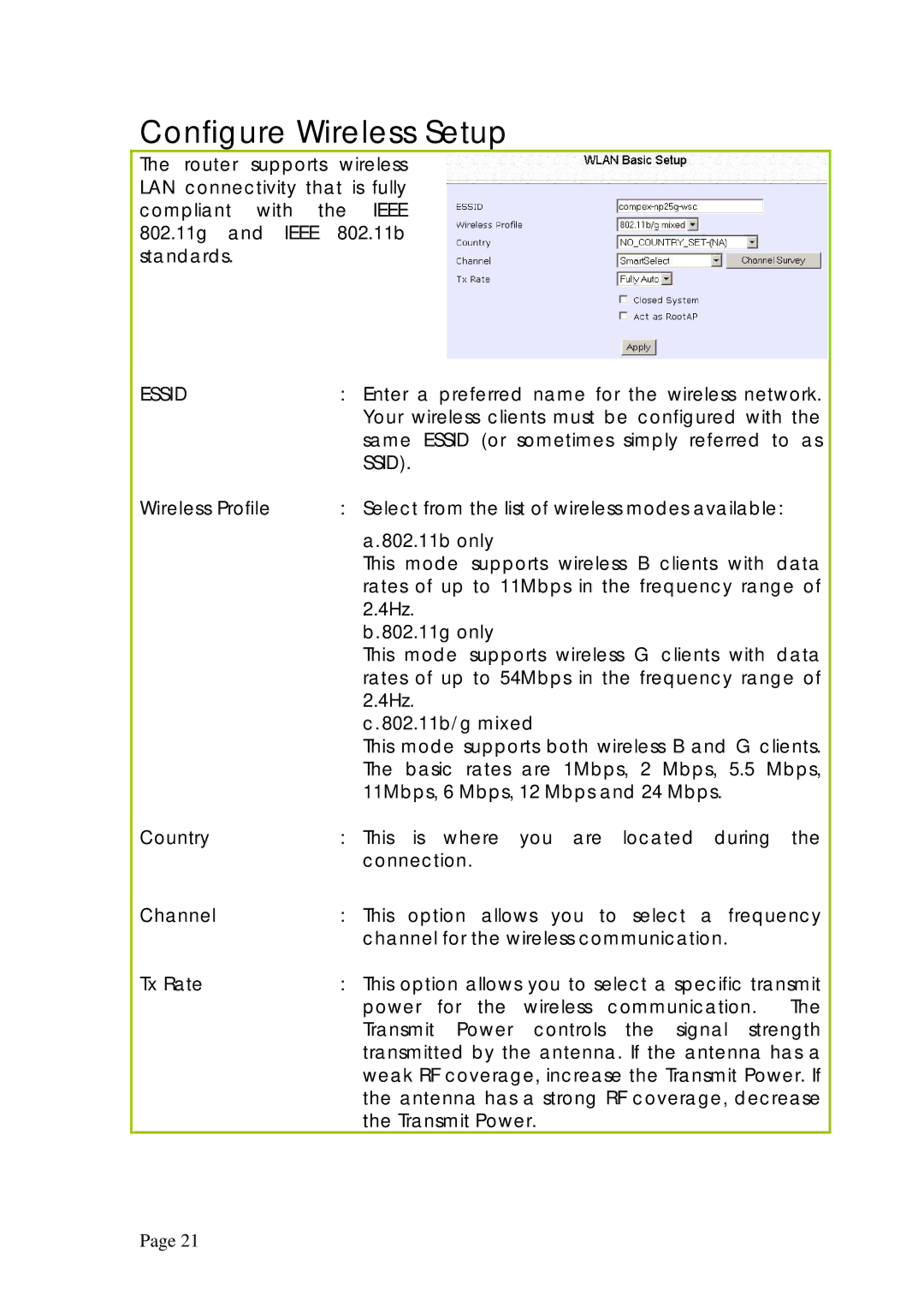
Configure Wireless Setup
The router supports wireless LAN connectivity that is fully compliant with the IEEE 802.11g and IEEE 802.11b standards.
ESSID | : | Enter a preferred name for the wireless network. |
|
| Your wireless clients must be configured with the |
|
| same ESSID (or sometimes simply referred to as |
|
| SSID). |
Wireless Profile | : Select from the list of wireless modes available: | |
|
| a.802.11b only |
|
| This mode supports wireless B clients with data |
|
| rates of up to 11Mbps in the frequency range of |
|
| 2.4Hz. |
|
| b.802.11g only |
|
| This mode supports wireless G clients with data |
|
| rates of up to 54Mbps in the frequency range of |
|
| 2.4Hz. |
|
| c.802.11b/g mixed |
|
| This mode supports both wireless B and G clients. |
|
| The basic rates are 1Mbps, 2 Mbps, 5.5 Mbps, |
|
| 11Mbps, 6 Mbps, 12 Mbps and 24 Mbps. |
Country | : This is where you are located during the | |
|
| connection. |
Channel | : | This option allows you to select a frequency |
|
| channel for the wireless communication. |
Tx Rate | : This option allows you to select a specific transmit | |
|
| power for the wireless communication. The |
|
| Transmit Power controls the signal strength |
|
| transmitted by the antenna. If the antenna has a |
weak RF coverage, increase the Transmit Power. If the antenna has a strong RF coverage, decrease the Transmit Power.
Page 21
